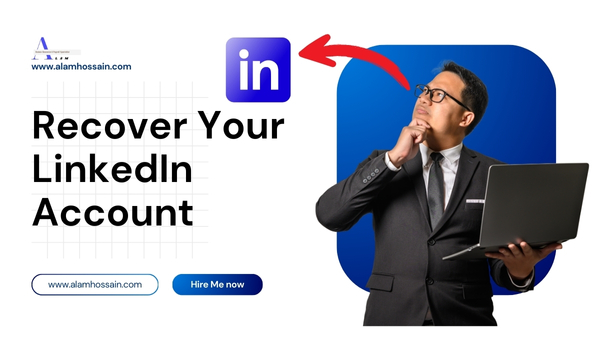
By Md Alam Hossain-
Employee retention has reached a critical point with 3.3 million US workers quitting in July 2024 alone. We’re facing a talent exodus that demands immediate attention from business leaders everywhere.
The workplace landscape is evolving rapidly, and effective employee retention strategies must evolve alongside it. In fact, research shows that hybrid work improves employee retention by up to 58%, highlighting the importance of employee retention in this new era. Furthermore, nearly 81% of workers consider mental health support when evaluating potential employers, directly impacting employee engagement and retention across industries.
In this article, we’ll explore the most significant work trends reshaping how companies attract and keep talent. From AI automation to the hybrid work evolution, mental health initiatives, employee experience platforms, and purpose-driven work environments – these are the factors you simply cannot afford to ignore if you want to boost your employee retention rate in today’s competitive market.
The AI Shift: How Automation is Reshaping Work
The workplace is rapidly transforming as artificial intelligence reshapes how companies operate. AI technology doesn’t just streamline operations—it fundamentally alters how employees work, engage, and ultimately, stay with an organization. According to research, over 80% of organizations plan to increase their investments in automation solutions in the coming years [1], signaling a massive shift in workplace technologies that directly impacts employee retention.

AI tools for productivity and engagement
AI-powered tools are revolutionizing how employees complete their daily tasks, creating efficiencies that boost both productivity and satisfaction. Studies show that organizations implementing automation can achieve productivity increases of up to 30% in process-driven environments [2].
These productivity gains aren’t just theoretical—they translate into real workplace improvements. For example, teams using AI-enhanced collaborative platforms report a 25% improvement in task completion rates within deadlines [2], while employees using AI-assisted scheduling tools experience approximately 15% higher productivity [2].
Moreover, AI is transforming employee engagement through personalized experiences. AI-powered platforms gather real-time feedback, track engagement metrics, and provide actionable recommendations tailored to individual employees [3]. This personalization is crucial, as research indicates that customized engagement initiatives significantly enhance employee motivation and satisfaction [3].
Automation in HR and performance tracking
HR departments are at the forefront of this transformation, using automation to eliminate repetitive tasks and focus on strategic initiatives. Organizations report that HR automation has saved them an estimated two weeks’ worth of time by eliminating paperwork [4], allowing HR professionals to concentrate on people-centered responsibilities.
Performance management has similarly evolved through automation. Modern AI-driven systems track employee performance through continuous monitoring rather than annual reviews. These systems provide:
- Real-time feedback and coaching
- Data-driven performance insights
- Personalized development plans
- Unbiased evaluations that reduce unconscious bias [4]
The results are impressive: automated performance management systems show enhanced engagement through more frequent feedback conversations [4], while AI-driven analytics enable HR to identify patterns that might indicate when employees are considering leaving [3]. This predictive capability allows organizations to address issues proactively, directly improving employee retention rates.
Balancing efficiency with human connection
Despite these benefits, the most successful implementations of AI recognize that technology should complement—not replace—human connection. As one study concluded, “Technology has to be a complement to human interaction, not a replacement for it” [5].
The challenge lies in finding the right balance. While 74% of workers would consider taking a new role if development opportunities were included [3], these opportunities must blend technological efficiency with personal growth. Companies that manage this balance effectively see a 21% increase in profitability [2], highlighting how crucial this approach is to employee retention strategies.
Augmented coaching represents one approach to this balance, using AI to handle data analysis while empowering leaders to focus on the personal aspects of coaching [5]. This method allows managers to get “their heads out of spreadsheets and their hearts back into coaching” [5].
The future workplace won’t be dominated entirely by automation, nor will it reject technological advances. Rather, successful employee retention strategies will embrace what AI does best—handling routine tasks, providing data-driven insights, and personalizing experiences—while preserving the irreplaceable human elements of empathy, creativity, and connection.
The Hybrid Work Evolution

Image Source: https://pixabay.com/
Hybrid work models have emerged as a game-changer for employee retention strategies in today’s competitive talent landscape. Recent research proves what many have suspected—giving employees flexibility about where they work directly impacts their decision to stay with your company.
Why flexibility is now a baseline expectation
The evidence is compelling: employees who shifted from full-time office work to a hybrid schedule (3 days office, 2 days home) saw resignations drop by a remarkable 33% [6]. This reduction was particularly significant among women, non-managers, and those with long commutes [6]. In fact, companies estimate that each prevented resignation saves approximately $2,399,971 in recruitment and training costs [7].
Flexibility is no longer a perk—it’s a fundamental expectation. For knowledge workers especially, whose roles typically require university degrees and creative thinking, remote work options have become non-negotiable. Over a third now want to be fully remote [8], and studies show that 80% of millennials and 74% of Gen Z workers consider flexibility their top priority when evaluating job prospects [9].
Nevertheless, a disconnect exists between employer and employee expectations. Although 47% of employers prefer staff in the office 2-3 days weekly, 50% of workers are willing to come in only one day per week at most [8]. This tension represents one of the most critical challenges in designing effective employee retention strategies.
Challenges in maintaining culture remotely
CEOs and CHROs consistently cite maintaining company culture as their primary concern with remote and hybrid work [10]. Many leaders specifically worry about creating two separate cultures—one for in-person employees and another for remote workers [10].
The cultural challenges are substantial:
- Building personal connections without regular face-to-face interaction
- Ensuring equal participation between remote and in-office employees
- Maintaining consistent communication across distributed teams
- Creating opportunities for spontaneous collaboration and innovation
These issues directly affect employee engagement and retention. When workers feel disconnected from company culture, their sense of belonging diminishes, ultimately increasing turnover risk. Additionally, proximity bias can lead to in-office employees receiving more advancement opportunities [11], creating inequities that drive talent away.
Designing hybrid policies that actually work
Effective hybrid work policies must balance employee desires with organizational needs. The data indicates this balance is achievable—studies found hybrid work arrangements had zero negative effect on productivity or career advancement opportunities [6] while still delivering substantial Employee Retention benefits.
Essentially, successful hybrid policies share several key characteristics:
Clarity and intentionality: Define which days require office presence and which tasks benefit most from in-person collaboration. Making these distinctions transparent helps employees understand the “why” behind office requirements rather than seeing them as arbitrary rules [12].
Flexibility alignment: Tailor policies to individual circumstances and team needs rather than implementing rigid, one-size-fits-all approaches [13]. The most successful models acknowledge that different employees have different “circumstances for flourishing” [13].
Cultural cohesion: Plan deliberate opportunities for relationship-building across remote and in-office settings. Schedule team-building activities that include everyone, regardless of location [14].
Tech-enabled collaboration: Ensure that meetings include both in-person and remote participants equally, preventing the formation of “communication silos” [15].
Trip.com’s successful experiment with hybrid work stands as powerful evidence—afterward, the company made hybrid work permanent company-wide [6]. By implementing thoughtful, data-driven policies, they achieved what seemed impossible: improving employee retention rates without sacrificing productivity or innovation of Employee Retention.
Mental Health and Well-being as Retention Drivers
Mental health has emerged as a critical factor in the battle for talent, with data showing a direct connection between employee well-being and an organization’s ability to retain valuable staff. A staggering 82% of today’s workforce is currently at risk of burnout [2], making workplace mental health support an urgent business priority, not merely a nice-to-have benefit.
The cost of burnout and disengagement
The financial impact of employee burnout is substantial. Research published in the American Journal of Preventive Medicine estimates that burnout costs organizations between $479,994 and $2,519,970 per employee annually [2]. For a 1,000-person company, this translates to approximately $599.99 million in annual losses [2]. The cost varies significantly by position, with executives ($2,481,930) and managers ($1,298,864) representing the highest financial risk [16].
Beyond direct costs, disengagement undermines productivity, with Gallup estimating the price tag at approximately $65.99 billion in the US alone [17]. Consequently, addressing mental health has become a business imperative rather than just a humanitarian concern.
Wellness programs that go beyond perks
Traditional wellness approaches often fall short. A comprehensive assessment of 90 workplace interventions found most well-being programs delivered minimal impact [18]. Meanwhile, a 2023 survey revealed that employees aren’t seeking meditation apps or resilience training—they want structural changes: limited work outside typical hours, four-day workweeks, and dedicated mental health days [18].
Effective wellness initiatives must address root causes instead of symptoms. Indeed, as one expert noted, “Instead of trying to put bandaids on broken systems, let’s transform the system instead” [18]. This means focusing on creating psychologically safe workplaces where every team member supports not just their own well-being but also that of their colleagues [18].
How to support mental health in hybrid teams
Hybrid work presents unique mental health challenges, including isolation, blurred work-life boundaries, and difficulty disconnecting. In fact, 27% of remote workers struggle to unplug at day’s end [19]. Successful strategies for hybrid team mental health include:
- Regular, meaningful check-ins between managers and employees to normalize conversations about mental health [4]
- Team days with purposeful connection activities like collaborative workshops or team lunches [1]
- Manager training specifically focused on recognizing early signs of mental distress [4]
- Consistent communication to prevent uncertainty and anxiety [20]
The link between well-being and employee retention rate
The connection between well-being and retention is backed by compelling evidence. Organizations prioritizing employee mental health report 22% lower turnover rates than those without such programs [21]. Notably, 73% of non-managerial employees and 76% of managers indicated they would be more likely to stay at a company offering high-quality mental health resources [22].
Harvard research further confirms this relationship, showing that wellness initiatives can reduce absenteeism by up to 28% [23]. Companies that implement mental health support see measurable improvements in employee engagement, productivity, and ultimately, Employee Retention rates.
A peer-reviewed study in Population Health Management reached a definitive conclusion: “When employees’ well-being increases, outcomes also improve for individuals and organizations” [24]. Likewise, research demonstrates that employees with higher well-being cost employers less, perform better, and stay longer [24].
The Rise of Employee Experience Platforms (EXP)
In today’s talent marketplace, Employee Experience Platforms (EXPs) have become vital tools for organizations seeking to combat turnover and boost satisfaction. These digital solutions are reshaping how companies engage with their workforce from onboarding through retirement.
What EXPs are and why they matter
An employee experience platform is software that supports teams by improving connections, providing insights, fostering shared purpose, and encouraging professional growth. As a result, these platforms serve as investments in employees that allow them to perform at their best [5].
The business case for implementing EXPs is compelling:
- 94% of employees would remain at their company longer if it invested in their learning and development [5]
- Workers with clarity about priorities are more than four times as likely to report happiness at their current company [5]
- Organizations with highly engaged employees demonstrate 23% greater profitability [5]
Beyond improving retention rates, these platforms streamline onboarding processes and create more efficient workflows, directly reducing the disconnect in distributed work environments [25].
Real-time feedback and sentiment tracking
Most importantly, modern EXPs leverage AI-powered sentiment analysis to monitor employee feedback across multiple channels. These tools detect emotional tones in communications, extract actionable trends, and even predict potential turnover [26].
Opinion mining capabilities enable organizations to identify impressions about services and products, subsequently allowing managers to address concerns before they escalate [27]. Sophisticated platforms analyze seemingly unrelated data streams to find correlations between factors affecting workplace satisfaction [28].
Companies implementing these systems can track Net Promoter Scores in real-time, notifying customer service representatives when intervention might prevent employee departures [29].
Personalized learning and development journeys
Above all, EXPs shine in delivering customized professional growth opportunities. These platforms provide centralized hubs for development courses where employees learn at their own pace while managers share tailored content based on individual needs [5].
Personalized learning approaches match employee interests, readiness levels, strengths, and future aspirations [3]. This customization creates higher engagement as content remains relevant to each learner of Employee Retention.
The strength of this approach lies in giving employees ownership over their learning journey, which leads to greater interest and proactive engagement with resources [3]. For organizations, this translates into improved skill progression through custom learning paths based on current proficiency and desired growth trajectories [3].
In essence, Employee Retention, effective EXPs enable organizations to build a culture of continuous learning that attracts and retains talent by helping employees achieve their goals more efficiently [3].
Purpose, ESG, and the New Meaning of Work
Beyond competitive salaries and benefits, today’s workforce is increasingly driven by a deeper motivation—a sense of purpose and meaning in their work. This fundamental shift in workplace expectations makes understanding the relationship between purpose, Environmental Social Governance (ESG), and employee retention an urgent priority for forward-thinking organizations for Employee Retention.
Why employees want more than a paycheck
Research consistently shows that employees, particularly younger generations, seek workplaces that align with their personal values. Remarkably, 70% of employees tie their sense of purpose to their work, with those who can live their purpose demonstrating higher productivity levels [30]. This shift is especially pronounced among younger workers—Millennials are described as “the most purpose-driven generation we’ve ever had” [30], with 76% of millennials considering companies’ social and environmental commitments before deciding where to work [31].
The financial implications are striking—52% of workers would willingly take a pay cut to work at a company with values better aligned with their own [32]. Among Gen Z workers, this figure jumps to 68% (versus 35% of Boomers) [32], clearly indicating how younger employees prioritize purpose over compensation of Employee Retention.
Integrating ESG into daily operations
Successful integration of ESG principles requires organization-wide participation. Companies should:
- Articulate ESG goals through various communication channels including intranets, social media, emails, and meetings [31]
- Foster a top-down approach where leadership demonstrates authentic commitment [31]
- Empower and educate employees to create a sustainability-focused culture [33]
- Engage stakeholders including employees, customers, and the broader community [33]
Organizations with robust ESG standards consistently outperform peers financially [34], making ESG integration not just ethically sound but commercially advantageous. Notably, companies with high employee satisfaction tend to have lower carbon emissions, greater diversity, and better understanding of employee needs and Employee Retention [35].
How purpose boosts employee engagement and employee retention
The connection between purpose and retention is undeniable. Organizations fostering a sense of shared purpose report 52% lower turnover among newer employees [36]. This retention benefit extends across regions, with similar results observed in North America, Europe, Middle East, Africa, and Asia-Pacific [36].
Moreover, Employee Retention and when employees feel their work positively impacts the world, they’re 11 times more likely to remain with their organizations long-term [35] and 14 times more likely to look forward to coming to work [35]. Impressively, employees who feel connected to their company’s purpose are 3 times more likely to be engaged [37], translating to tangible business benefits including reduced absenteeism, fewer accidents, lower turnover, and improved sales and profitability [30].
Ultimately, Employee Retention and organizations that effectively communicate purpose, integrate ESG initiatives, and connect employees’ daily work to meaningful outcomes create powerful retention advantages in today’s purpose-driven job market.
Conclusion
The workforce landscape has undeniably transformed over recent years. Throughout this article, we’ve explored five critical trends reshaping employee retention strategies. AI automation now enhances productivity while requiring thoughtful implementation that preserves human connection. Hybrid work policies have proven their worth, with companies seeing up to 33% fewer resignations when offering flexible arrangements. Additionally, mental health support has emerged as a non-negotiable element of retention, with organizations prioritizing well-being reporting 22% lower turnover rates of Employee Retention.
Employee Experience Platforms represent another powerful tool, providing real-time insights and personalized development opportunities that make staff feel valued and understood. Last but certainly not least, purpose-driven work environments significantly boost engagement, as employees who connect with their company’s mission are three times more likely to stay committed long-term.
The data speaks clearly – addressing these five trends isn’t just about following workplace fashion. Instead, these elements form the foundation of effective retention strategies in today’s competitive talent market. Companies that adapt accordingly will find themselves better positioned to retain their most valuable asset – their people. Those that don’t risk watching their talent walk out the door toward organizations that better understand these fundamental shifts in employee expectations of Employee Retention.
Above all, successful retention strategies require genuine commitment rather than superficial changes. When leadership authentically embraces these trends and integrates them into company culture, the results extend beyond mere retention statistics to create truly thriving workplaces where employees choose to build their futures for Employee Retention.
References
https://www.mind.org.uk/workplace/mental-health-at-work/hybrid-working-tips-on-creating-a-mentally-healthy-hybrid-workplace/https://www.forbes.com/sites/julianhayesii/2025/03/17/employee-burnout-the-hidden-threat-costing-companies-millions/https://www.eidesign.net/how-personalized-learning-enhances-the-development-of-employees/https://www.premisehealth.com/resources/blog/strategies-for-supporting-employee-mental-health-for-a-hybrid-workforce/https://www.microsoft.com/en-us/microsoft-viva/employee-experience-platformhttps://news.stanford.edu/stories/2024/06/hybrid-work-is-a-win-win-win-for-companies-workershttps://hrexecutive.com/for-better-employee-retention-why-hybrid-work-may-offer-the-most-value/https://www.ey.com/en_ae/newsroom/2023/09/pay-well-being-and-flexibility-prolong-workplace-tensions-as-more-than-a-third-of-employees-likely-to-quit-ey-survey-findshttps://clickup.com/blog/workplace-flexibility/https://www.shrm.org/topics-tools/news/hr-magazine/remote-work-challenges-company-culturehttps://hackinghrlab.io/blogs/balancing-flexibility-hybrid-remote-work/https://www.upwork.com/resources/hybrid-work-policieshttps://www.harvardbusiness.org/desigining-hybrid-work/https://www.jusscriptumlaw.com/post/the-impact-of-remote-work-on-company-culturehttps://www.employeeconnect.com/hybrid-work-models-balancing-flexibility-with-productivity-in-the-new-workforce/https://www.fastcompany.com/91289611/employee-worker-burnout-costs-companies-5-million-per-year-researchhttps://www.engageemployee.com/blog/the-real-cost-of-employee-disengagementhttps://fortune.com/well/2024/01/17/workplace-wellness-benefits-not-effective/https://inovapayroll.com/employee-engagement/6-ways-to-support-mental-health-in-the-hybrid-workplace/https://www.lyrahealth.com/resources/guide/managers-guide-supporting-remote-or-hybrid-mental-health/https://vorecol.com/blogs/blog-importance-of-employee-well-being-in-talent-retention-7894https://www.modernhealth.com/post/employee-retention-and-mental-health-benefitshttps://www.hrfuture.net/workplace-culture/culture-workplace-happiness/employee-wellbeing-a-key-to-retention-and-productivity/https://www.recruiter.com/recruiting/study-finds-strong-relationship-between-employee-wellbeing-and-retention/https://www.aluminati.net/all-the-benefits-of-an-employee-experience-platform/https://www.researchgate.net/publication/389890858_AI-Powered_Customer_Feedback_Analysis_and_Sentiment_Monitoring_for_Realtime_Business_Insightshttps://ieeexplore.ieee.org/document/8743331/https://blog.haiilo.com/blog/employee-experience-platform/https://www.expressanalytics.com/solutions/sentiment-analysis/https://thoughtleadership.org/purpose-in-the-workplace-improves-engagement-and-retention-for-employees/https://assets.kpmg.com/content/dam/kpmg/cn/pdf/en/2020/01/integrating-esg-into-your-business.pdfhttps://www.qualtrics.com/blog/company-values-employee-retention/https://morrowx.com/your-guide-to-integrating-esg-into-business-practices/https://www.thestrategyinstitute.org/insights/integrating-esg-into-your-business-strategy-a-step-by-step-guide-for-entrepreneurshttps://greatplacetowork.co.nz/blog/workplace-esg-how-environmental-social-and-governance-factors-impact-employee-experience/https://fromdayone.co/stories/2023/3/20/how-a-companys-sense-of-purpose-can-boost-employee-retentionhttps://www.ha-agency.com/blog/purpose-driven-employee-engagement




